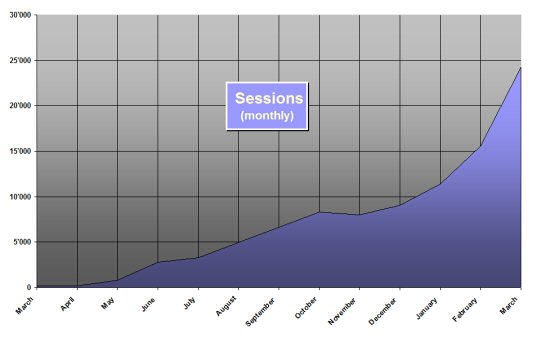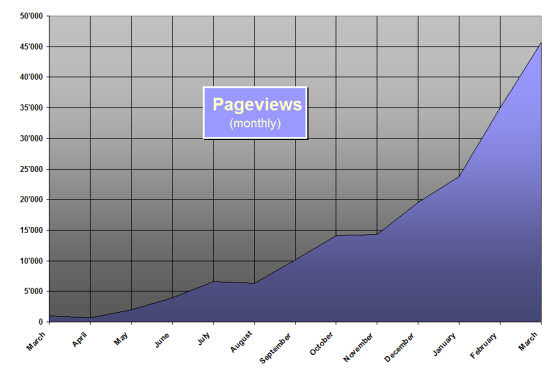Pixoria released an update 1.8.4 of Konfabulator.
This update addresses the following issues:
Full review here.

Pixoria released an update 1.8.4 of Konfabulator.
This update addresses the following issues:
Full review here.
So, after having played for a while with my first bridge (hp 945, 5.3MP, 8x optical zoom), I decided to enter a complete new world for me – the digital SLR (Single-Lens Reflex) photography.
I read a lot of different tests and I decided myseld for a Canon EOS 20D, which is recognized as one of the best camera in this semi-professional field, i.e. for the so-called “prosumers”. You can find some tests here:
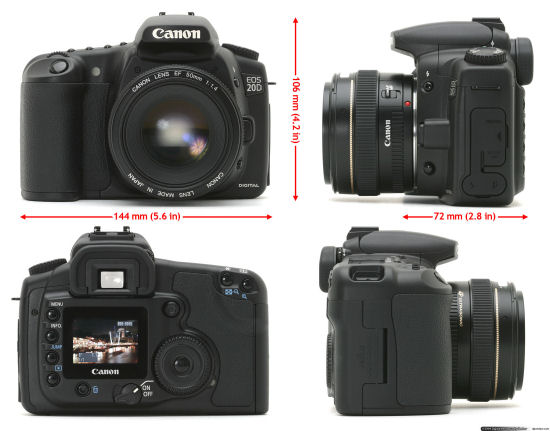
I bought the 20D with the Canon lens EF-S 18-55mm f/3.5-5.6 which is typically sold with as a package. This lens is a cheap one and I have known that I would have to buy another lens. This one is not really good and is more degrading the overall quality of the 20D. Again, a lot of readindgs, specially in the forums this time. I was laughing a lot during all these readings because the people have about the same behaviour as in the IT world (Microsoft vs. Open Source, XP vs. linux): nether ending discussions between fans & experts who are fighting for Canon, or for Nikon, for this kind of lens, for this one, etc. :-)
I hesitated between two Canon lens, which are completely different and differently positionned: the EF 17-40mm f/4.0L USM and the EF-S 17-85mm f/4.0-5.6 IS USM. The 17-40 is recognized as one of the best lens in this range of price, with very high quality optics. It does give you true wide angle coverage (equal to a 27mm lens on a full frame 35mm camera) and being an “L” series lens it’s built to professional standards, a silent USM (UltraSonic Motor) ring motor, distance scale and comes with a hood. USM motors are silent and manual focus (FTM = Full Time Manual) is possible without switching out of autofocus.
Have a look at theses reviews:
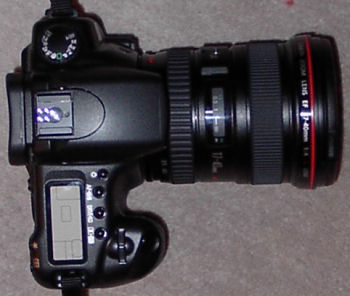
I saw this poster yesterday in the office of a friend of mine. Great :-)

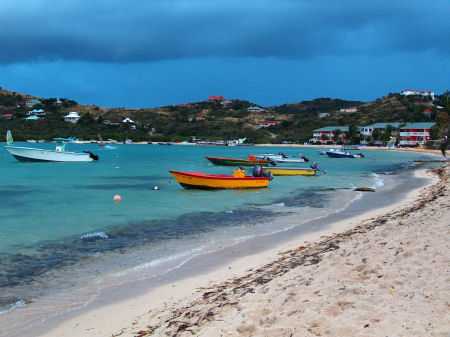
A paradise for shopping, a nightmare for your cerdit card ;-)
St. Barths is a duty free port, and shoppers will be delighted with the range and number of shops: from a shaded table by the side of the road, to the elegant displays and marble floors reminiscent of Rue du Faubourg St. Honoré in Paris.
The highest concentration of shops is in Gustavia, followed by St-Jean, with its several shopping centers. It is wise to allocated more than a single afternoon to see what’s what and where’s where.
[via St-Barths.com]
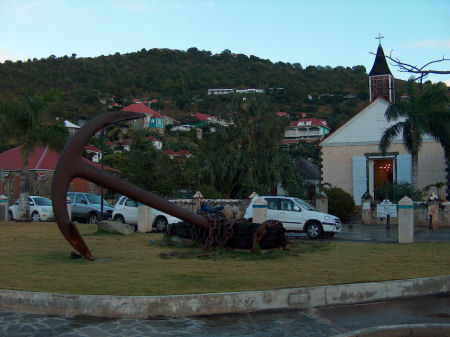
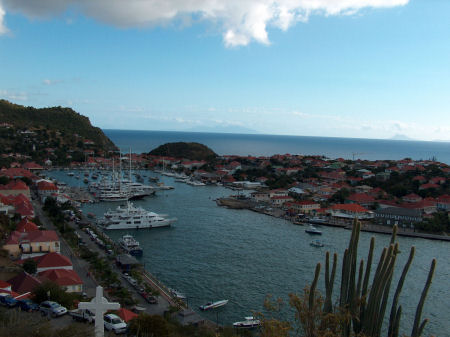
 Free and plays everything under the sun, including QuickTime and RealTime.
Free and plays everything under the sun, including QuickTime and RealTime.
Last version 1.28 available here.
About K-Lite Codec Pack.
[via BetaNews]
Microsoft announced Friday that its $120 million acquisition of Groove Networks had completed, just days after a Delaware court threw out a lawsuit by a former Groove executive to prevent the merger. Michael Matthews sued because he claimed the deal was unfair to the employees of Groove Networks.
As planned, Groove will join the Information Worker unit of Microsoft, which develops Office. “While Groove and Microsoft technologies already work together in very powerful ways, we’ve only just begun to realize opportunities to better address the needs of information workers at a time when the very nature of work itself is changing,” said Groove founder Ray Ozzie, now Microsoft’s Chief Technical Officer.
As you (perhaps?) know, I am working for Helvetia Patria (fast 10 years, wow). Our annual results 2004 were presented today and they are…pretty good ;-) Have a look:
One of the best result within Switzerland and Europe in the insurance branch.
Yey :-) Good for us and for our bonus.
The complete results are available here.
[via CICLOPS]
CICLOPS means Cassini Imaging Central Laboratory for OPerationS. Very nice picture of Jupiter.
This true color mosaic of Jupiter was constructed from images taken by the narrow angle camera onboard NASA’s Cassini spacecraft starting at 5:31 Universal time on December 29, 2000, as the spacecraft neared Jupiter during its flyby of the giant planet. It is the most detailed global color portrait of Jupiter ever produced; the smallest visible features are ~ 60 km (37 miles) across. The mosaic is composed of 27 images: nine images were required to cover the entire planet in a tic-tac-toe pattern, and each of those locations was imaged in red, green, and blue to provide true color. Although Cassini’s camera can see more colors than humans can, Jupiter here looks the way that the human eye would see it.[…]
Everything visible on the planet is a cloud. The parallel reddish-brown and white bands, the white ovals, and the large Great Red Spot persist over many years despite the intense turbulence visible in the atmosphere. The most energetic features are the small, bright clouds to the left of the Great Red Spot and in similar locations in the northern half of the planet. These clouds grow and disappear over a few days and generate lightning. Streaks form as clouds are sheared apart by Jupiter’s intense jet streams that run parallel to the colored bands. The prominent dark band in the northern half of the planet is the location of Jupiter’s fastest jet stream, with eastward winds of 480 km (300 miles) per hour. Jupiter’s diameter is eleven times that of Earth, so the smallest storms on this mosaic are comparable in size to the largest hurricanes on Earth.
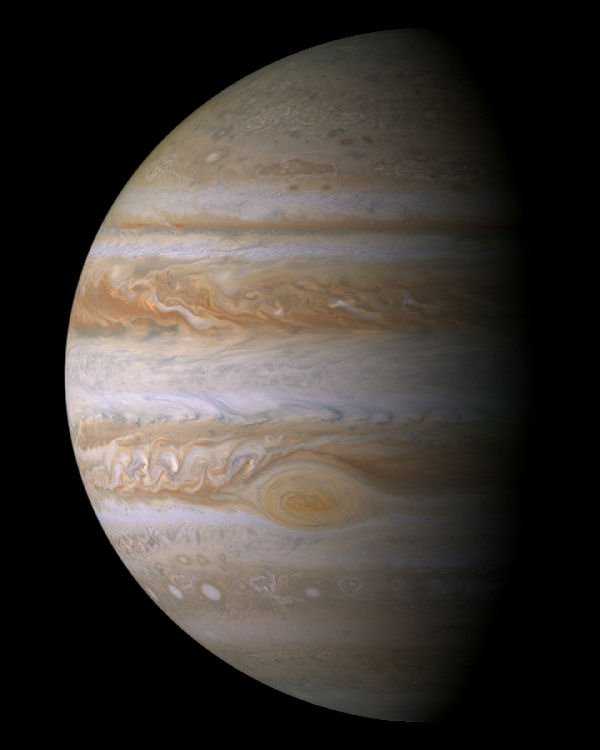
As you know, Microsoft acquired Groove last month.
Jeff Clavier posted an interesting follow-up about the deal. Have a look!
As usual, I would like to publish some information about my monthly statistics.
– number of hits: 189’424 (daily min.: 3’994, max.: 10’381)
– number of pageviews: 45’678 (daily min.: 1’080, max.: 2’327)
– number of sessions: 24’213 (daily min.: 491, max.: 1’506)
– bytes transferred: 5.92 GB (daily min.: 120 MB, max.: 348 MB)
– weblog: 81% (thereof atom.xml: 30%, BootstrappersBible.pdf: 1.39%)
– website: 16%
– robots.txt: 3%
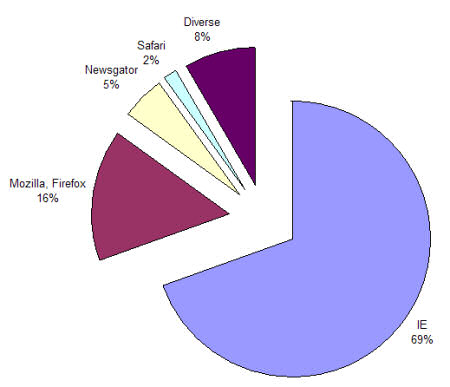
The version 6.0 of Internet Explorer represents 93% of the IE’s used to access my pages.
33 different countries identified:
Australia, Austria, Brazil, Canada, Czech Republic, Denmark, Ecuador, Estonia, Finland, France, Germany, Greece, Hungary, Israel, Italy, Japan, Latvia, Mexico, Netherlands, Niue, Norway, Poland, Romania, Russian Federation, Slovak Republic, South Korea, Spain, Sweden, Switzerland, Tuvalu, Ukraine, United Kingdom, United States
